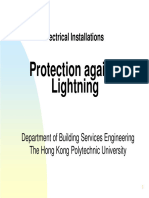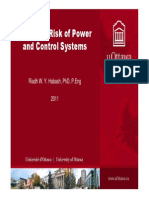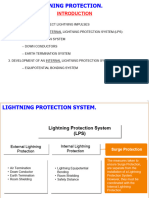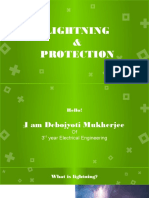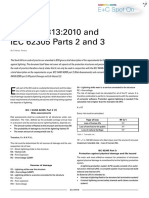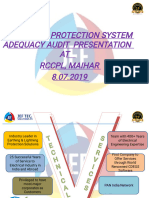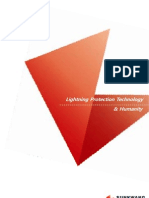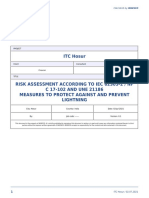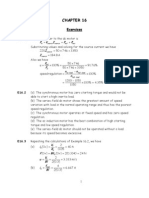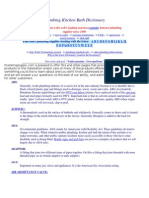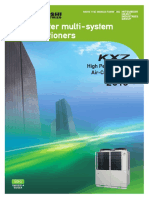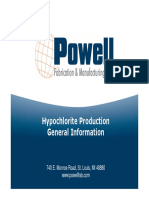0% found this document useful (0 votes)
43 views45 pagesLightning Protection
The document outlines the principles and guidelines for lightning protection systems (LPS) as per various standards, detailing the risks associated with lightning strikes and the necessary protective measures. It discusses the characterization of lightning waves, sources of damage, and the design of both external and internal lightning protection systems, including surge protection devices (SPDs). Additionally, it emphasizes the importance of risk assessment calculations to determine the need for LPS based on potential losses.
Uploaded by
Karim HamdyCopyright
© © All Rights Reserved
We take content rights seriously. If you suspect this is your content, claim it here.
Available Formats
Download as PDF, TXT or read online on Scribd
0% found this document useful (0 votes)
43 views45 pagesLightning Protection
The document outlines the principles and guidelines for lightning protection systems (LPS) as per various standards, detailing the risks associated with lightning strikes and the necessary protective measures. It discusses the characterization of lightning waves, sources of damage, and the design of both external and internal lightning protection systems, including surge protection devices (SPDs). Additionally, it emphasizes the importance of risk assessment calculations to determine the need for LPS based on potential losses.
Uploaded by
Karim HamdyCopyright
© © All Rights Reserved
We take content rights seriously. If you suspect this is your content, claim it here.
Available Formats
Download as PDF, TXT or read online on Scribd
/ 45

